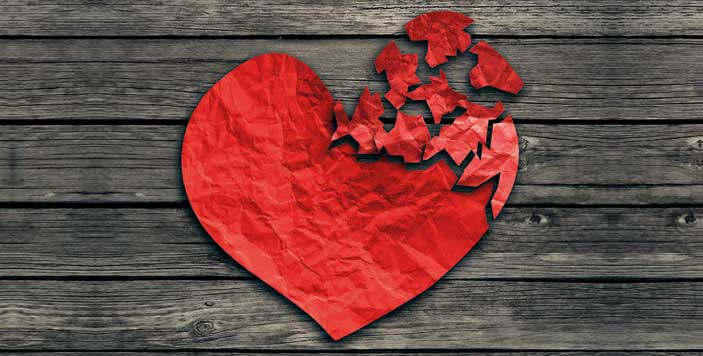Heal a broken heart

Legendary actress Debbie Reynolds died just one day after her daughter Carrie Fisher, most famous as Star Wars’ Princess Leia, passed away.
Carrie suffered a heart attack on a plane the Friday before, dying in hospital four days later. The very next day, Debbie was rushed to the same Los Angeles hospital suffering a stroke. Her son, Todd Fisher, confirmed her death on Wednesday evening, saying: “She wanted to be with Carrie… and then she was gone.”
The media headlines declared she died of a “broken heart”. There is significant medical evidence that might substantiate that theory. Dr Mark Creager, past President of the American Heart Association, writes: “A ‘broken heart’ really is an event where the heart ceases to function normally and is prone to heart rhythm abnormalities.”
The research of Dr Sunil Shah of St George’s University in London also suggests losing someone may double the risk of having a heart attack or stroke: “We found quite clearly that people who had lost [a loved one] were at twice the risk of having either a heart attack or stroke in the first month.”
The term ‘broken heart syndrome’ is known clinically as ‘stress cardiomyopathy’.
Most often triggered by a stressful event, the heart muscle is ‘overwhelmed’ by a massive flood of adrenaline which produces ‘ballooning’ in the left ventricle caused by the bottom of the heart not contracting properly. In the 1990s, Japanese researchers coined the term ‘takotsubo cardiomyopathy’, taken from the Japanese name for a ‘fishing pot’ to trap octopuses, which has a similar shape to the ballooning heart.
While some suggest that this reaction is intended to protect the heart, medical proponents of ‘broken heart syndrome’ speculate that in any situation of overwhelming shock, the heart muscle is suddenly weakened or stunned. Usually the paralysis eases, but occasionally the acute stress can lead to a cardiac arrest or stroke due to the disturbance in the heart’s intrinsic electrical activity.
So whether Debbie died of a ‘broken heart’ or stress cardiomyopathy, where the stress of her daughter’s death caused her arteries to seize, or whether her stroke was the result of blocked arteries, is left to medical examiners to decide.
But as professional people intimately connected to those experiencing high stress after a death or crisis, we need to be aware of the dangers. People must understand that while their response is normal, their fears and concerns will be diminished as they see and discover ways and even reasons to live beyond this experience.
Avert a catastrophe: The initial goal of crisis management is to avert a catastrophe. Try to calm the situation down as much as possible.
Offer reassurance that, as serious and difficult as this situation is, what they are experiencing is normal for this stage. One report said Debbie Reynolds was planning her daughter’s funeral when she suffered the stroke. That is stress. Help the person defuse.
Listen: Realising they are being heard lessens a person’s anxiety and gives them the feeling they are in a place where help will be forthcoming. Hear their struggles and challenges; learn what they need to accomplish to ‘get through’.
Help restore balance: Help the person to see the whole picture. Many times after a death, all people can focus on is that one aspect: “My loved one has gone and I won’t be able to survive without them.” That concern is understandable, but is not the whole picture.
Reasons to go on: The struggles of today can be overcome. Giving people reasons to keep going is crucial. Supportive people with whom they can share feelings can help relieve stress, as can physical activity and relaxation therapy. People at risk of ‘broken heart syndrome’ need to know there are people who care about them – and for whom they can still care.
But sadly, for some people, the loss seems just too great. We can show them it doesn’t have to be so, and that with our and others’ support they can find ways to go on.
Tags: aftercare, broken heart, Carrie Fisher, celebrity, Debbie Reynolds, Dr Bill, Leia, Star Wars, takotsobu, Webster